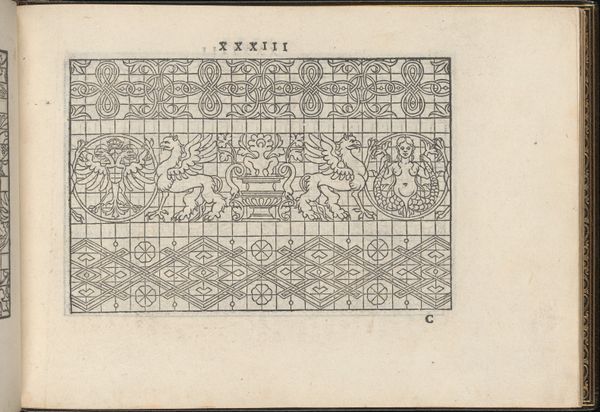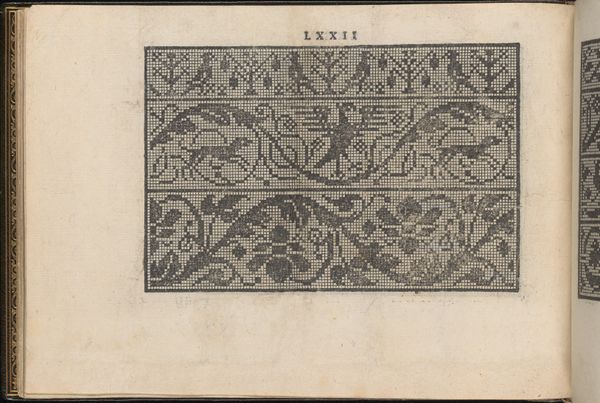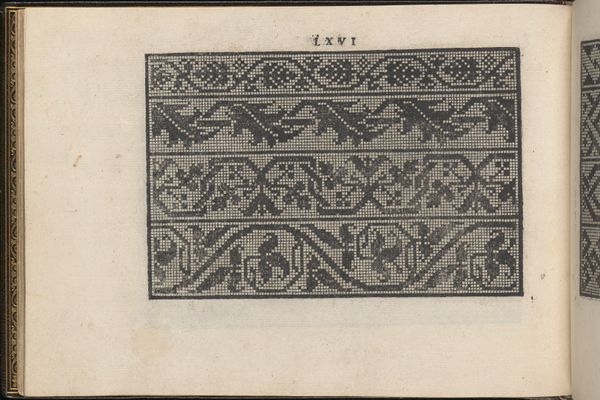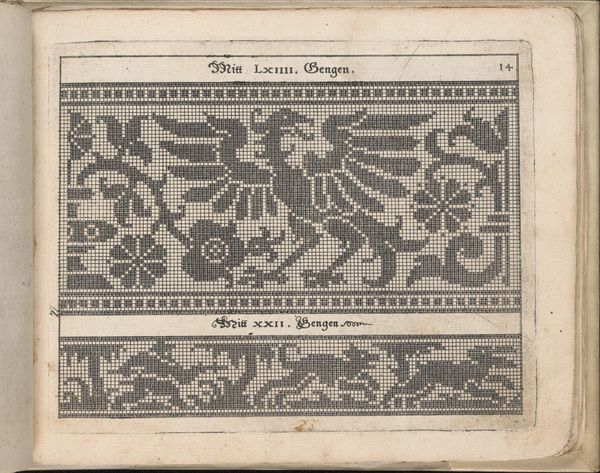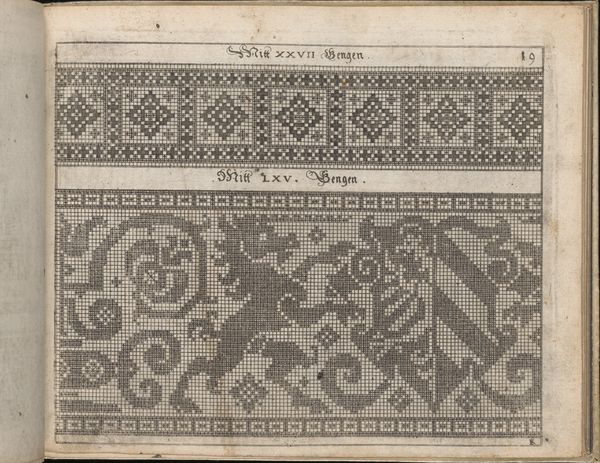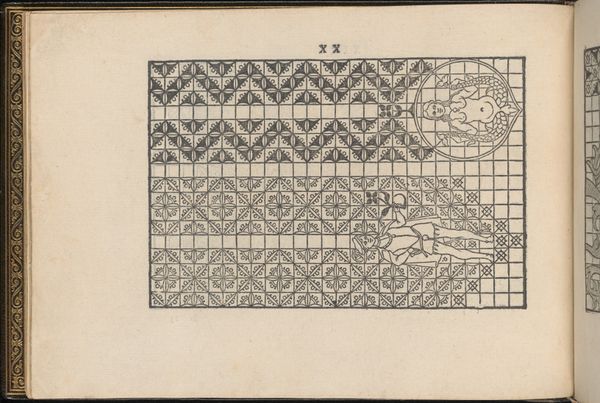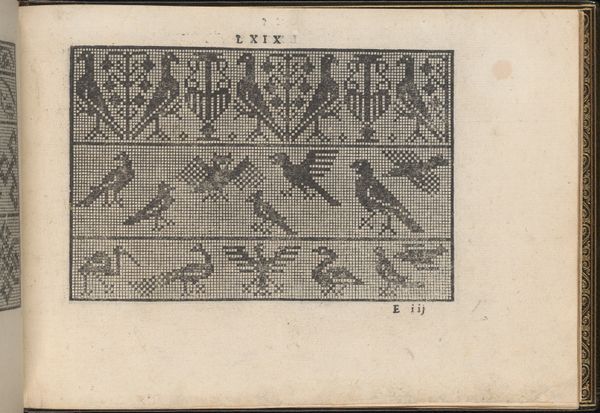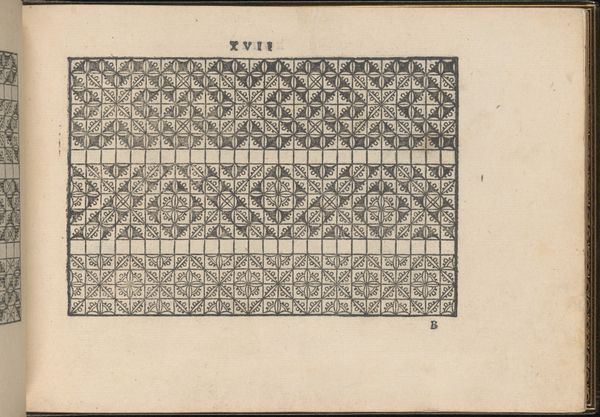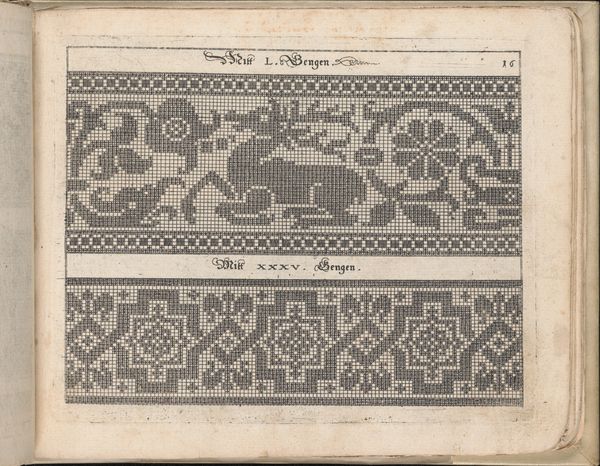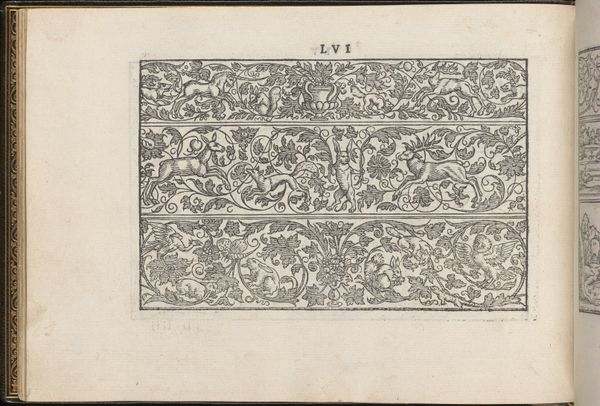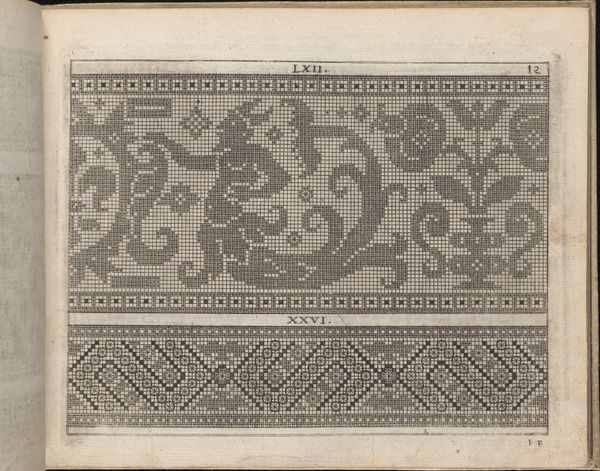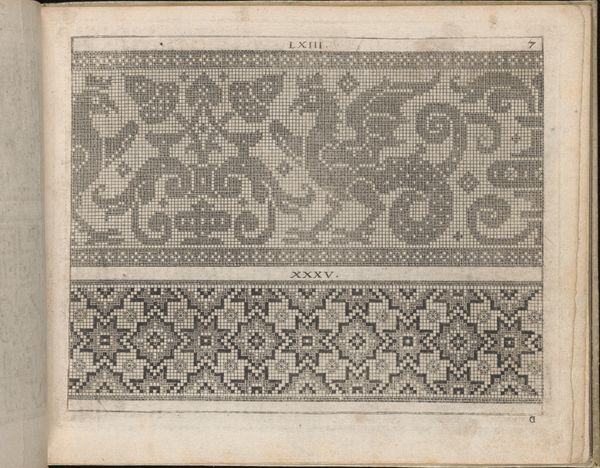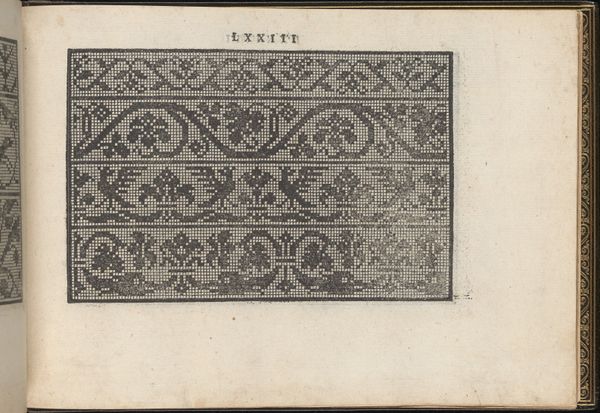
La Vera Perfettione del Disegno di varie sorti di recami, page 36 (recto) 1567
0:00
0:00
drawing, print, engraving
#
drawing
# print
#
11_renaissance
#
geometric
#
engraving
Dimensions: Overall: 6 5/16 x 8 7/16 in. (16 x 21.5 cm)
Copyright: Public Domain
Editor: This is an engraving from 1567 by Giovanni Ostaus, a page titled "La Vera Perfettione del Disegno di varie sorti di recami," housed at the Metropolitan Museum. The pixelated look from the printmaking process makes it feel almost digital! I'm curious about how we're meant to engage with it. What's your interpretation of this image, especially considering its original context? Curator: Well, first, recognize the title refers to 'the true perfection of the design' for various types of embroidery. That tells us something about its immediate use: as a pattern book. However, such books served a wider socio-political role. Consider the historical moment: the rise of mercantile wealth and courtly culture. Embroidery was labor, yes, but *highly valued* labor, controlled largely by elite women. Editor: So, displaying skill in needlework wasn't just a pastime. It had a kind of social currency? Curator: Exactly. Think of this print as an instruction manual, yes, but *also* as a vehicle for reinforcing hierarchies. Owning pattern books, executing complex designs... These signaled status and belonging. Even the hunting scene depicted here contributes; hunting has been an elite preserve for millennia! Who had access to it, who could consume the game... What statement does this image subtly communicate about leisure, status, and taste? Editor: I hadn’t considered the embroidery patterns as statements of social position! So, looking beyond just the pretty designs… Curator: We find a carefully constructed world where artistry intersects with social performance. Think of how publications such as this shaped the visual landscape and influenced not just what people *made*, but what they *valued*. How do you see this influencing later designs? Editor: I'll definitely be paying more attention to the politics embedded within seemingly decorative arts going forward. This changed how I perceived the work! Curator: Likewise, thinking about *access* and social implications adds layers of depth even to something as seemingly simple as an embroidery pattern.
Comments
No comments
Be the first to comment and join the conversation on the ultimate creative platform.
